Publication Date: 2025/10/31
- The History of LACRIS™ Development/ Application Examples and Stability in Various Uses
Feature
What is LACRIS™
LACRIS™ is the trade name for a proprietary spore preparation of Bacillus coagulans SANK70258※. The preparation was first introduced in Japan in 1966 as a probiotic ingredient for foods. Since then, it has been widely used in a variety of food and dietary supplement products. Over the decades, we have built a strong foundation of scientific research, from basic studies to practical applications.
In 1949, Dr. Oki Nakayama at the University of Tokyo successfully isolated a spore-forming lactic acid bacterium from green malt, later identified as Bacillus coagulans SANK70258. This unique strain, often referred to as a spore-forming lactic acid bacterium, shows remarkable heat and acid resistance compared with conventional lactic acid bacteria. Taking advantage of these characteristics, it was developed as a lactic acid bacterium capable of surviving the journey through the stomach and reaching the intestines alive, allowing its use in a wide variety of food applications.
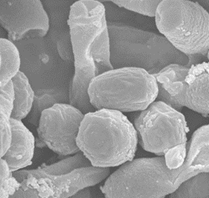


※With advances in genetic analysis technologies, the reclassification of microbial species has been evolving progressing. Bacillus coagulans has also undergone several taxonomic revisions: it was — initially identified as Lactobacillus sporogenes at the time of discovery, reclassified as Bacillus coagulans in 2004, then as Weizmannia coagulans in 2020, and most recently as Heyndrickxia coagulans in 2023.
High Stability in Extreme Environment
High- Heat Resistance
LACRIS™ remains highly stable even under extreme heat. It can withstand 30 min of heat treatment at 90°C, and its powder form retains stability at 120°C.

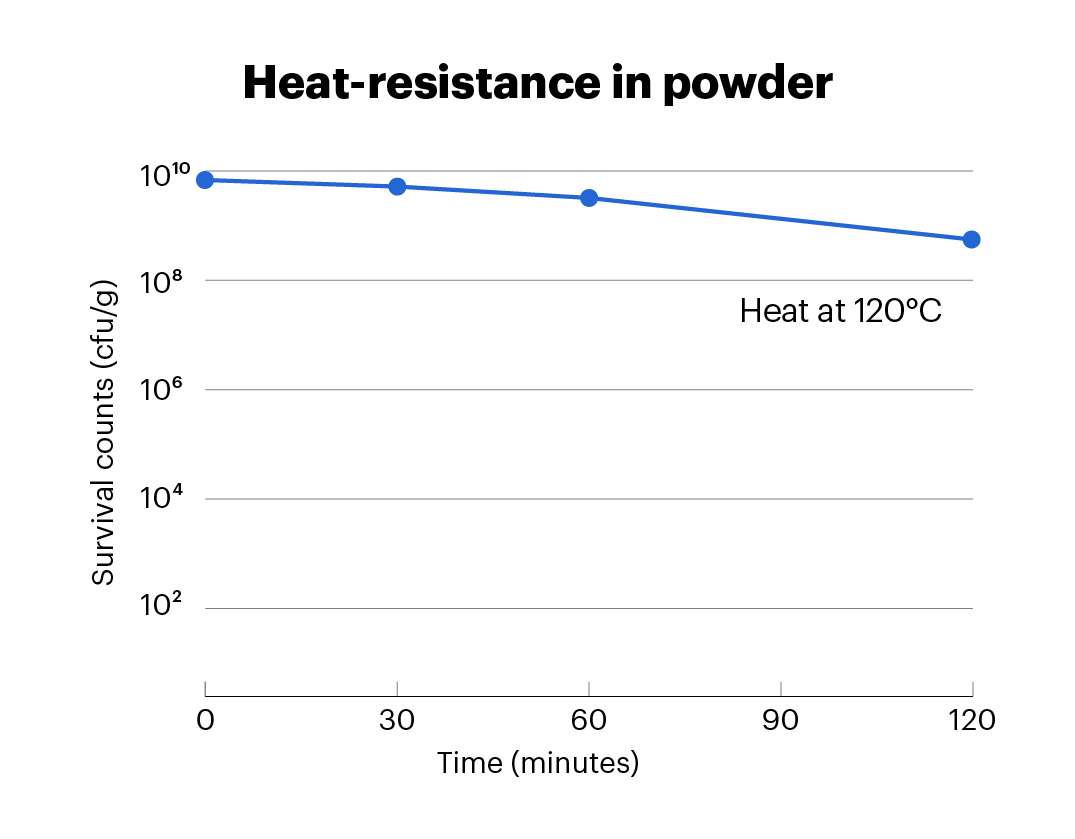
High Acid Resistance

LACRIS™ remains viable in the highly acidic conditions of the stomach (pH = 1.2) for up to 60 min, allowing it to reach the intestines alive despite exposureto gastric acid and bile. In contrast, other probiotics and vegetative cells lose nearly all viability within just 15 min under the same conditions.
Stability in Liquids

LACRIS™ remains highly stable in liquid environments, maintaining its viability even in salty or sugar-rich liquids. This ensures consistent probiotic performance across a variety of beverage and liquid food applications.
Stability Data
Tablet

| Raw materials | Composition |
| LACRIS™ | 1.6 × 108/g |
| Form | φ9 mm, 300 mg/tablet |
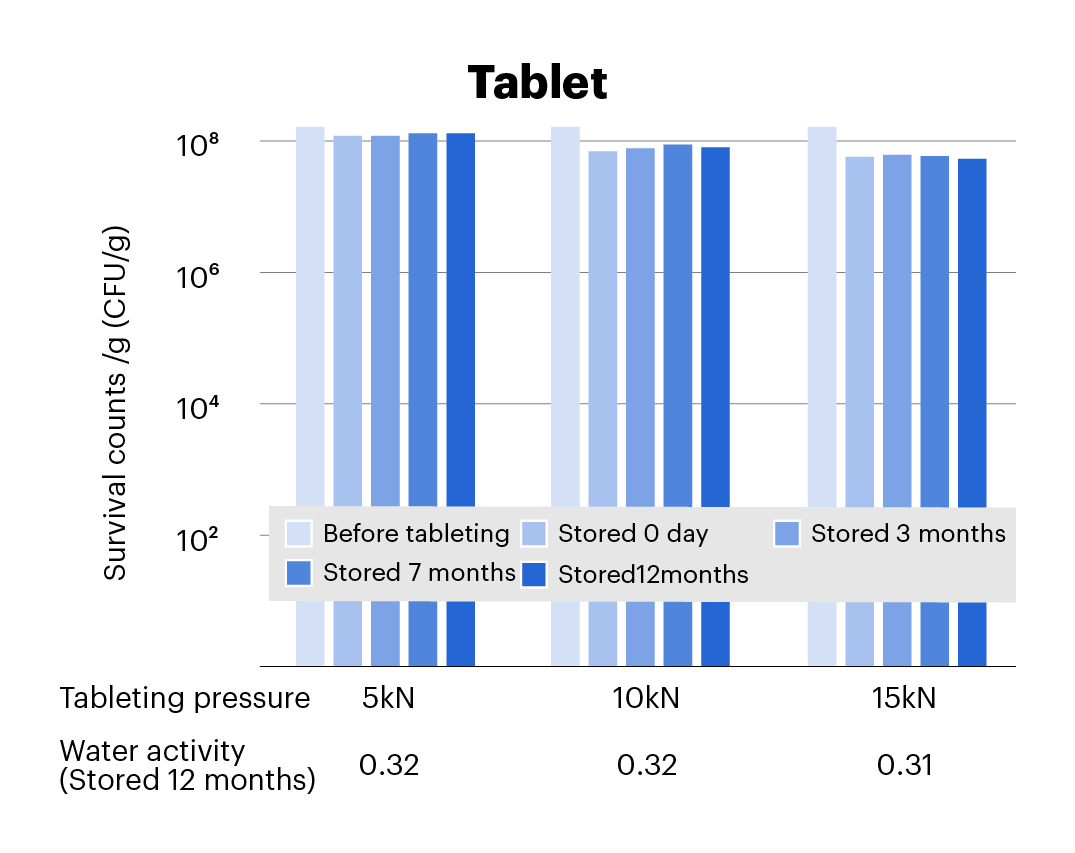
Hard Capsule

Store at 40°C 75% RH
| Raw materials | Amount of blending |
| LACRIS™ / B.longum | 2×108 counts 40mg |
| Excipient | 160mg |

Beverage (pH 4.1)
Sugars, fruit juice (apples, peaches), fermented milk, skim milk, cream stabilizer, flavoring, acidulant, etc.
| Temperature | 4°C and 25°C |
| Portion size | 12 mL |
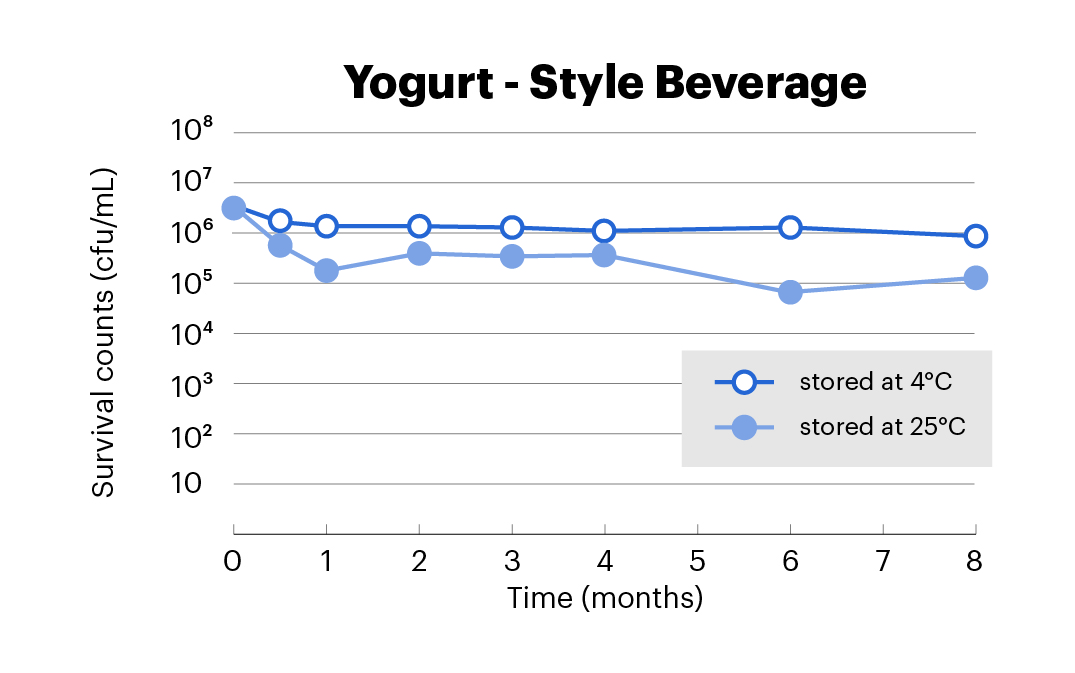
100% Juice (pH 3.7)
Ingredients
Concentrated apple juice and flavoring agent
| Temperature | 4°C and 25°C |
| Portion size | 12mL |

Buttercream
Ingredients
UnSalted butter, sucrose, and salt
Trial Recipe
Butter to soften at approximately 30°C, add sugar and salt, and mix thoroughly.
Strage Condition
| Temperature | 4°C and 25°C |
| Portion | 1g |

Baked Chocolate
Ingredients
Dextrin, Cocoa Powder, Sugar, and Sugar Esters.
Trial Recipe
The ingredients were mixed uniformly at 60°C and then poured into a mold and cooled to set. After Subsequentlythat, the samples were baked at 120°C for 12 minutes, and then further baked at 200°C for 2 minutes.
Storage Condition
| Temperature | 4°C and 25°C |
| Weight per piece | 1g |

Powdered Seasoning
Ingredients
Cheese powder, sugar, dextrin, powdered vinegar, salt, skim milk, pork extract, garlic powder, black pepper, dried parsley, acidulant, spice, flavoring, and caramel Colorant
Storage Condition
| Temperature | Approx. 23°C |
| Portion size | 5g |
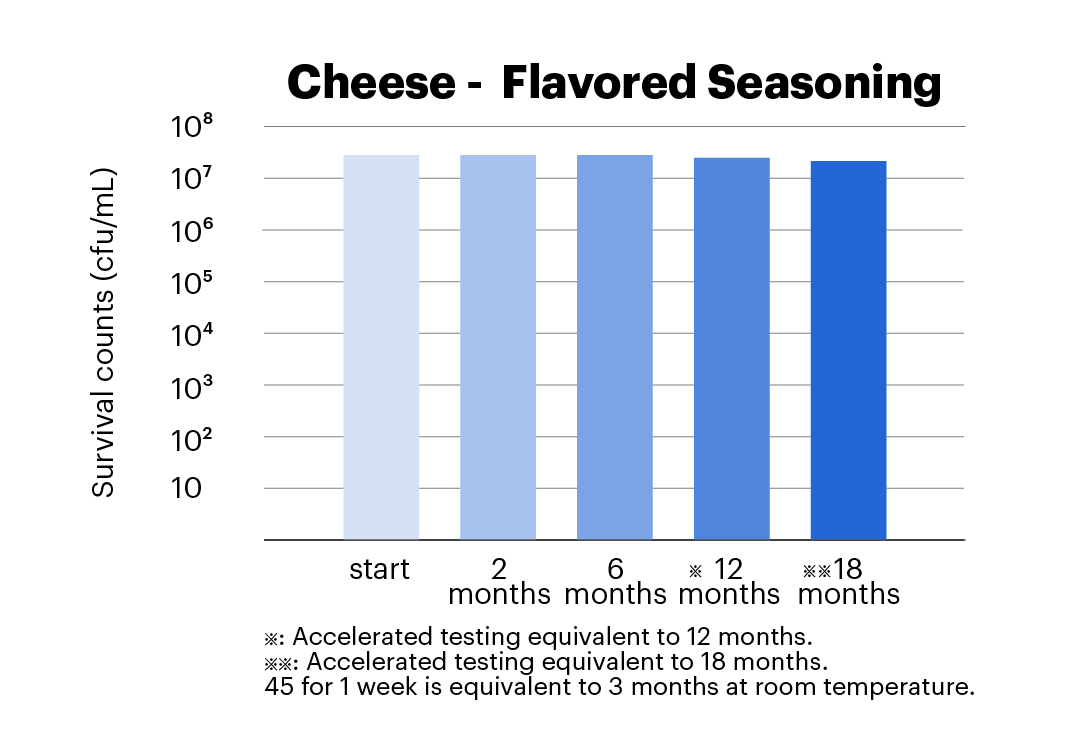
Drinkable Jelly (pH 3.8)
Ingredients
Liquid dextrin, high-f Fructose corn syrup, Muscat juice, acidity regulator, calcium, lactose, gelling agent, Various vitamins, and niacin
Storage Condition
| Temperature | 4°C and 25°C |
| Portion size | 10mL |
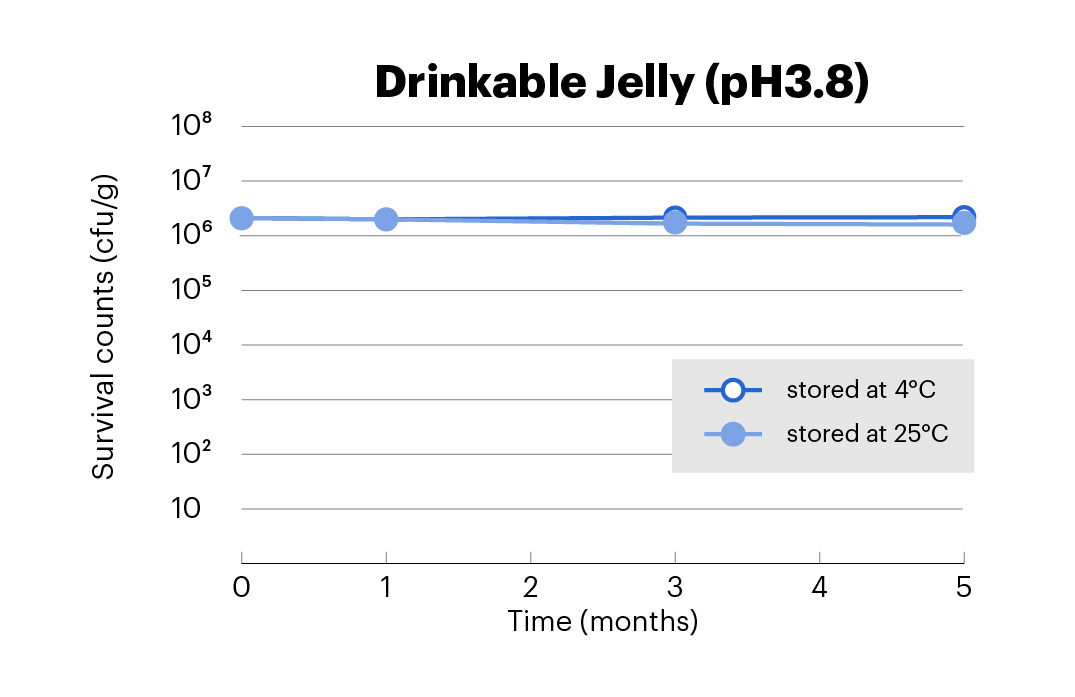
Gelatin-Based Gummy

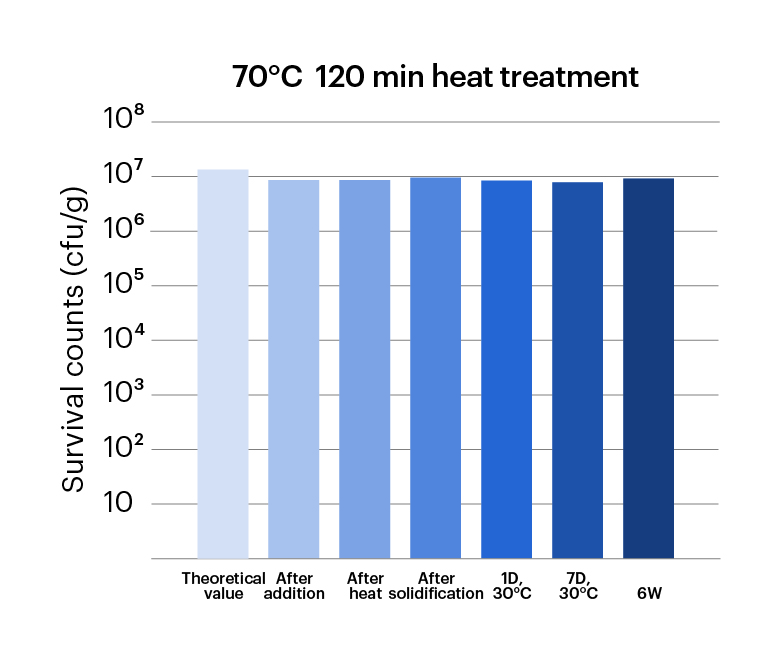
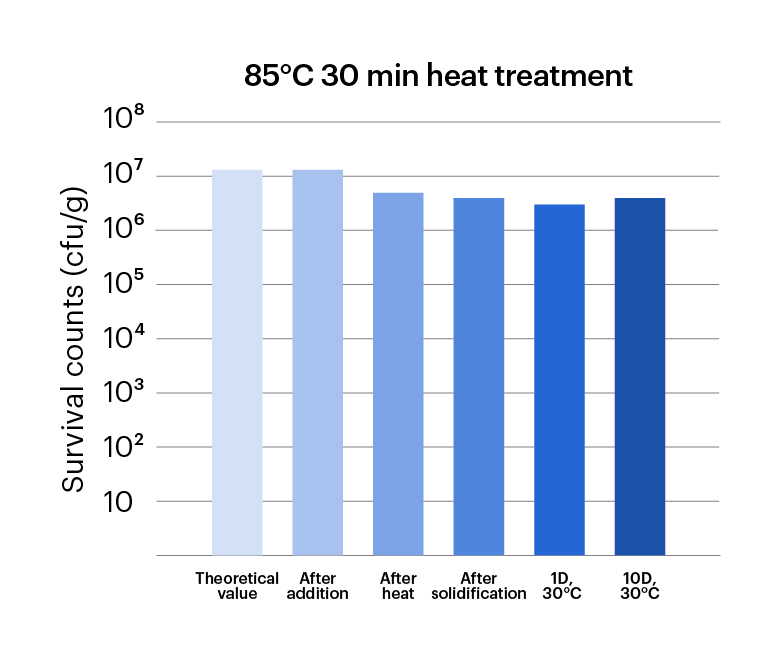
Pectin-Based Gummy
Gummy liquid (106°C) LACRIS™ amounts: 4.0 million counts. Storage temperareture: 4°C

Mechanisms of Probiotics for Human Health Benefits
Probiotics use two approaches to improve human health. Probiotics proliferate and produce various metabolites, such as lactic acid, in the large intestine, providing a healthy gut microbiome. Probiotic cell wall components such as peptidoglycans have immune-modulating effects on the small intestine.

Potential Synergistic Effects with Various Prebiotics
LACRIS™ delivers grater benefits when paired with prebiotics. Because it reaches the intestines alive, LACRIS™ makes the most of prebiotic nutrients. Together, they create a synbiotic boost—helping good bacteria thrive, increasing vital metabolites, and supporting a healthier gut environment. With its natural spore protection, LACRIS™ can be blended into a wide variety of synbiotic products, making it a versatile partner for the next era of gut health. We also back this potential with scientific data on its combined effects with various other probiotics.

Intestinal Behavior of LACRIS™
When LACRIS™ is taken orally, it passes through the stomach in its spore form. Because the spores have a high tolerance to acidic conditions, LACRIS™ can reach the intestine alive. Once in the intestine, LACRIS spores germinate into vegetative cells, which produce lactic acid and exert beneficial effects in the gut.

Even two weeks after discontinuing intake, LACRIS™(Bacillus coagulans SANK70258)was still detected in human feces. This demonstrates that the ingested LACRIS™ can survive gastric and intestinal fluids and reach the intestines alive. In animal studies, administration to chickens resulted in a tenfold increase in bacterial counts from the small intestine to the large intestine, highlighting its ability to thrive throughout the gut.

